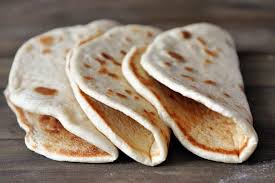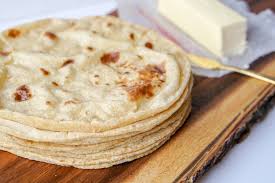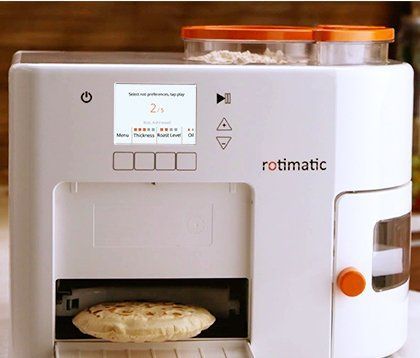Automatic Roti Makers Create A Well “Rounded” Food Staple

The time-consuming and laborious task of preparing handmade rotis get a high-tech makeover with automatic roti-making machines
A major chunk of the world population is familiar with the concept of flattened carbs, and to them, nothing compares to the gastronomic satisfaction it brings! However, measuring out ingredients in the perfect proportion, hand-kneading the dough, and finally roasting it on a heat source makes it a daunting task. Given the popularity of the flatbread, it was only a matter of time till a self-sufficient roti making machine came into being. Before we delve into the revolutionary potential of such kitchen equipment, let’s take a look at what makes a typical flatbread.
What are Flatbreads?
Flatbreads are a wholesome form of bread staple that is an integral part of different cuisines and consumed across geographies. These are generally accompanied by various preparations of curries, vegetables, and more, depending on the different cultures and traditions.
Consequently, there is no singular way of making flatbreads. It has several variants that are prepared suiting the taste of the demography it caters to. However, the key ingredients that remain constant to all the varieties of this wholesome bread are dry flour and water. In certain cases, optional ingredients such as vegetables, spices, coconut, oil, and seeds are also added to spice things up.
The preparation time varies as well – while some need a resting time, others don’t. Although the common process requires the dough to be baked or cooked without oil on a flat pan, some are preferred fried to a crunch. Whether it is prepared manually or using a roti making machine, the process of making flatbreads essentially remains the same.
Origin of Flatbread
Numerous studies and excavations have proven the existence of flatbread and flatbread-making mechanisms in prehistoric times. These are deemed to be the ‘original bread’ since it was made on fire-heated rocks by people of nomadic tribes. Neither ovens had been devised by then, nor was yeast used.
Throughout the ages other processes were added in the making of a flatbread – refining of grains, a mixture of contents, and shaping the bread – while roasting and heating may have not altered.

Flatbread and its Global Consumption
Flatbread complements several dishes and is rich in fiber, vitamins, protein, and certain microelements. This explains why it has been part of the staple diet of people for eons.
Today, flatbread is the most commonly consumed bread as billions of people eat it regularly, and often in more than one meal a day. Be it rotis, other forms of flatbread such as puris, pizza bases, and tortillas, homemade meals frequently utilize them to fix a quick wrap, open sandwich, or wholesome tacos. Although the market is rife with factory-made flabreads, these are rarely as nutritious or fresh as the homemade variety. Additionally, readymade rotis are abundant in preservatives that are known to be detrimental to health. This has made the health conscious generation resort to high-tech automatic flatbread-makers that can provide freshly cooked flatbreads in their own kitchens, that too with minimal effort.
But what is a Roti?
The preparation of flatbread consumed in major parts of the Indian subcontinent is called roti, chapati, or phulka.
Roti is not just a flatbread but an essential part of meals across the Indian subcontinent and an integral component of the Indian culture and tradition. It is not only what Indians eat before they start their day, but in many ways is a representation of generations of family values passed down from mothers and grandmothers. Frequently one hears heart-touching stories of how they learned to roll out the perfectly circular roti following the example of the best cook in the house, and the first time they prepared the flatbread without burning a hole in it!

Making a Roti, or, Indian Flatbread
Making a roti out of dry flour, water, and other ingredients requires skill as well as practice and is no less than an art form.
The ingredients have to be mixed and kneaded into the dough of appropriate consistency. Small balls pulled out of the kneaded dough are then flattened into the required shape which could be round, square or triangular.
The dough then has to be rolled evenly to the desired thickness before it is ready for roasting, ideally on a skillet. The roti is considered done when it attains a delightful golden brown hue and puffs up.
So why go against tradition to use an automatic roti maker?
Simply because preparing a roti is not easy! Unfortunately, the seemingly simplistic food requiring just two ingredients is quite a task to create. Considering the standard gender roles, on an average, an Indian woman spends an hour of her every day to prepare fresh rotis at home. It is not just a time-consuming process but also quite a painstaking and tedious chore. Add to that the discomfort of staying put in front of a heat source to ensure you don’t burn the bread altogether!
An automatic roti maker would revolutionize how much time a person spends time in the kitchen, the labor invested in the roti making process, and the overall energy saved in terms of fuel/electricity consumption. These roti making machines ensure hygiene, efficiency, and is in sync with the digitized world we are steadily moving toward inhabiting. Dig in a little more and you’ll be amazed by the tech behind a single roti maker – think Artificial Intelligence and IoT.
The point remains, in a time when our schedules are getting tighter and every other task is being done through automation, preparing flatbreads such as rotis using manual labor is quite ridiculous. Kitchen robotics such as roti making machines are the future of traditional cooking.

Rotimatic is one such automatic roti maker which uses machine learning so each machine takes some time to make good bread; they are also connected to the internet for software upgrades. It takes about a minute to make one roti after the machine has been fully heated up which takes more than five minutes.
Transform your food with Rotimatic - tailor your meal according to your needs & indulge in low-calorie, healthy rotis for a nourishing lifestyle!